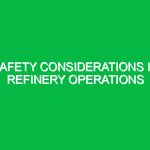As temperatures rise, especially in hot climates, the importance of Heat Stress Prevention becomes increasingly critical. Within the Health, Safety, and Environment (HSE) domain, recognizing the risks associated with heat stress is essential for protecting workers and ensuring their well-being. Heat stress can lead to serious health issues, including heat exhaustion, heat cramps, and even heat stroke—a potentially fatal condition. This article delves into the aspects of heat stress prevention, exploring hazards, safety precautions, and the relevant regulations that govern these practices.
Understanding Heat Stress
Heat stress occurs when the body cannot cool itself effectively, leading to a dangerous rise in core body temperature. This condition is particularly prevalent in hot climates, where high temperatures and humidity levels combine to exacerbate the risk. Factors such as physical exertion, heavy clothing, and inadequate hydration can further elevate the threat. The human body regulates temperature through perspiration and increased blood flow to the skin; however, when these mechanisms are overwhelmed, heat-related illnesses can occur.
The Relevance of Heat Stress Prevention in HSE
In the HSE domain, heat stress prevention is not merely a matter of comfort; it is a fundamental aspect of occupational health and safety. Employers have a legal and ethical obligation to provide a safe working environment. Inadequate measures for heat stress prevention can lead to increased absenteeism, reduced productivity, and, in severe cases, fatalities. Therefore, understanding and implementing effective heat stress prevention strategies is vital for all organizations operating in hot climates.
Identifying Hazards and Risks
Heat stress prevention requires a comprehensive understanding of the various hazards and risks associated with working in high-temperature environments. Here are some of the most significant risks:
1. Environmental Factors
High ambient temperatures, humidity, and direct sunlight are the primary environmental factors contributing to heat stress. For instance, outdoor workers exposed to the sun for extended periods are at a heightened risk of developing heat-related illnesses. A study from the National Institute for Occupational Safety and Health (NIOSH) found that workers in construction and agriculture face some of the highest risks due to prolonged sun exposure.
2. Workload and Activity Level
The intensity of physical labor plays a crucial role in heat stress. Heavy lifting, prolonged standing, or repetitive tasks can significantly increase metabolic heat production, compounding the risk of heat stress. Workers engaged in strenuous activities in hot conditions must be particularly vigilant. Anecdotal evidence from construction sites indicates that laborers working during peak afternoon hours often experience symptoms of heat exhaustion, emphasizing the need for careful scheduling and workload management.
3. Personal Factors
Individual susceptibility to heat stress varies. Factors such as age, fitness level, hydration status, and pre-existing medical conditions can all influence a person’s risk. Older workers or those with chronic illnesses may be less able to cope with heat stress. Moreover, certain medications can affect the body’s ability to regulate temperature, adding another layer of complexity to heat stress prevention.
Safety Precautions and Best Practices
Implementing effective heat stress prevention strategies is essential for safeguarding the health of workers in hot climates. Here are some actionable advice and best practices:
1. Hydration
Perhaps the most critical factor in preventing heat stress is maintaining adequate hydration. Workers should drink water regularly, even if they do not feel thirsty. A good rule of thumb is to consume about 1 cup (8 ounces) of water every 15-20 minutes during strenuous work. Employers should encourage water breaks and provide easily accessible hydration stations. In a field study from a local construction firm, workers who adhered to a strict hydration schedule reported fewer incidents of heat-related issues.
2. Work Scheduling
Employers should strategically plan work schedules to avoid peak heat hours, typically between 10 a.m. and 4 p.m. If possible, scheduling heavier tasks for the cooler parts of the day can dramatically reduce heat stress risks. A case study involving a manufacturing plant showed that adjusting work shifts to start earlier in the day led to a significant decrease in heat-related incidents.
3. Training and Awareness
Providing workers with training on the signs and symptoms of heat stress can empower them to take proactive measures. Workers should be educated on recognizing early warning signs, such as excessive sweating, weakness, or dizziness. Regular safety meetings can reinforce this training and keep heat stress prevention at the forefront of workplace safety discussions.
4. Personal Protective Equipment (PPE)
Wearing appropriate clothing is crucial for heat stress prevention. Lightweight, breathable fabrics that allow sweat to evaporate can help regulate body temperature. Employers should provide guidelines on suitable clothing for hot conditions and encourage the use of hats and sunscreen to protect against sun exposure. In one agricultural scenario, workers who wore lightweight, light-colored clothing reported feeling cooler and more comfortable during hot days.
5. Rest Breaks
Implementing regular rest breaks is vital in hot environments. Workers should be encouraged to take frequent breaks in shaded or air-conditioned areas to cool down. A structured break schedule can help ensure that employees do not push themselves too hard. Establishing a “cool-down” area equipped with fans or cooling towels can further aid in recovery during breaks.
6. Monitoring and Surveillance
Employers should consider implementing heat stress monitoring systems, especially in sectors where high temperatures are a significant concern. This can involve using heat stress indices, such as the Wet Bulb Globe Temperature (WBGT), which takes into account temperature, humidity, wind speed, and radiant heat. Real-time monitoring can help identify when conditions are unsafe and prompt necessary action.
Regulations and Standards
Numerous regulations and standards govern heat stress prevention in the workplace. In the United States, the Occupational Safety and Health Administration (OSHA) has guidelines that outline employers’ responsibilities to protect workers from heat-related illnesses. OSHA emphasizes the importance of training, hydration, and acclimatization in its recommendations.
Additionally, the American Conference of Governmental and Industrial Hygienists (ACGIH) publishes Threshold Limit Values (TLVs) that provide guidelines on heat stress exposure levels. Employers should familiarize themselves with these standards to ensure compliance and create a safe working environment.
International Considerations
Globally, organizations like the World Health Organization (WHO) and the International Labour Organization (ILO) have also established guidelines for heat stress prevention. These institutions advocate for a comprehensive approach that includes risk assessment, training, and worker participation in safety programs. Companies operating in multiple countries should be aware of varying regulations and best practices to ensure they meet local requirements.
Conclusion
Heat Stress Prevention in Hot Climates is a critical aspect of maintaining worker health and safety. By understanding the hazards associated with heat stress and implementing effective safety precautions, employers can create a safer working environment. Fostering a culture of awareness and responsibility around heat stress can lead to healthier, happier, and more productive workers.
As temperatures continue to rise globally, the importance of proactive heat stress prevention strategies cannot be overstated. Through education, training, and adherence to safety guidelines, we can mitigate the risks associated with heat stress and ensure that all workers can thrive in even the hottest conditions.


